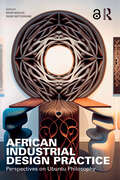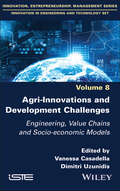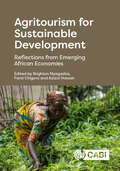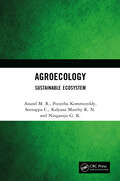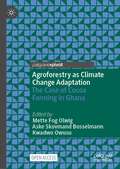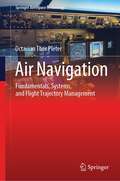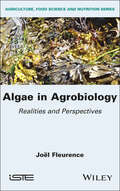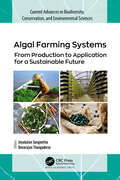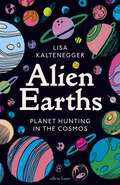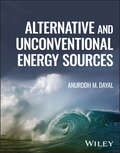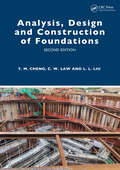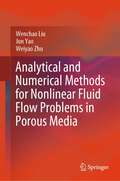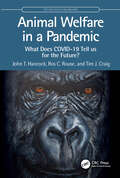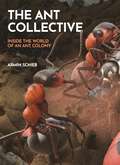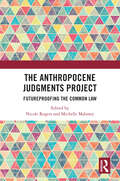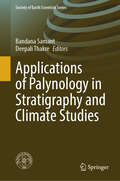- Table View
- List View
African Industrial Design Practice: Perspectives on Ubuntu Philosophy
The underlying principle of this book is the African philosophy of Ubuntu, which acts as a guide for developing empathic products and services. The book makes the case that empathy is the key to any successful product and service design project because it enables designers to make wise design choices that align with users' demands.Fifteen chapters provide the latest industrial design developments, techniques, and processes explicitly targeting emerging economies. At the outset, it covers the design context and the philosophy of the Ubuntu approach, which places people and communities at the centre of the development agenda. The book covers new product development, design research, design cognition, digital and traditional prototyping, bringing products to the market, establishing a company's brand name, intellectual property rights, traditional knowledge, and the business case for design in Afrika. It concludes with a discussion about the future of design and the skills aspiring designers will need.African Industrial Design Practice: Perspectives on Ubuntu Philosophy will be an essential textbook for undergraduates, postgraduates, instructors, and beginner designers in emerging economies to provide regionally contextualised design processes, illustrated examples, and outcomes.Chapter 2 of this book is freely available as a downloadable Open Access PDF at http://www.taylorfrancis.com under a Creative Commons Attribution-Non Commercial-No Derivatives (CC-BY-NC-ND) 4.0 license.
African Industrial Design Practice: Perspectives on Ubuntu Philosophy
by Richie Moalosi Yaone RapitsenyaneThe underlying principle of this book is the African philosophy of Ubuntu, which acts as a guide for developing empathic products and services. The book makes the case that empathy is the key to any successful product and service design project because it enables designers to make wise design choices that align with users' demands.Fifteen chapters provide the latest industrial design developments, techniques, and processes explicitly targeting emerging economies. At the outset, it covers the design context and the philosophy of the Ubuntu approach, which places people and communities at the centre of the development agenda. The book covers new product development, design research, design cognition, digital and traditional prototyping, bringing products to the market, establishing a company's brand name, intellectual property rights, traditional knowledge, and the business case for design in Afrika. It concludes with a discussion about the future of design and the skills aspiring designers will need.African Industrial Design Practice: Perspectives on Ubuntu Philosophy will be an essential textbook for undergraduates, postgraduates, instructors, and beginner designers in emerging economies to provide regionally contextualised design processes, illustrated examples, and outcomes.Chapter 2 of this book is freely available as a downloadable Open Access PDF at http://www.taylorfrancis.com under a Creative Commons Attribution-Non Commercial-No Derivatives (CC-BY-NC-ND) 4.0 license.
Agri-Innovations and Development Challenges: Engineering, Value Chains and Socio-economic Models
by Vanessa Casadella Dimitri UzunidisInnovation is a major challenge for economic development and social progress. Faced with the ecological and food problems that the world is currently experiencing, the legitimacy of innovation takes on its full meaning, particularly in developing countries. As emphasized by international organizations (UN, FAO), building skills and abilities in the agricultural and food sectors are necessary when launching innovation processes for the benefit of suffering populations. This book deals with different experiences launched in many developing countries in these sectors and shows how local initiatives can provide answers to the pessimism of experts and the media. Multidisciplinary analysis and practices explain how collective work creates value chains that can foster local and national economic development. The authors revisit the innovation agri-food models that contribute to economic development. Agri-Innovations and Development Challenges is composed of general presentations of innovations applied in developing countries, as well as specific studies on the joint valorization of knowledge and experience in agri-food engineering
Agri-Innovations and Development Challenges: Engineering, Value Chains and Socio-economic Models
by Vanessa Casadella Dimitri UzunidisInnovation is a major challenge for economic development and social progress. Faced with the ecological and food problems that the world is currently experiencing, the legitimacy of innovation takes on its full meaning, particularly in developing countries. As emphasized by international organizations (UN, FAO), building skills and abilities in the agricultural and food sectors are necessary when launching innovation processes for the benefit of suffering populations. This book deals with different experiences launched in many developing countries in these sectors and shows how local initiatives can provide answers to the pessimism of experts and the media. Multidisciplinary analysis and practices explain how collective work creates value chains that can foster local and national economic development. The authors revisit the innovation agri-food models that contribute to economic development. Agri-Innovations and Development Challenges is composed of general presentations of innovations applied in developing countries, as well as specific studies on the joint valorization of knowledge and experience in agri-food engineering
Agritourism for Sustainable Development: Reflections from Emerging African Economies
by Admire Mthombeni Bronson Mutanda Collen Sabao Dumisani Rumbidzai Muzira Dzingai Kennedy Nyahunzvi Edward Chinongwa Enard Mutenheri Ernest Mugoni Felix Chari Geoffrey Korir Gilda Eyang Gracious Mutipforo Hellen Amunga Jabulani Garwi Judith Moyo Katsande Chipo Martin Dzapasi Noreen Watyoka Nyasha Tendai Makiwa Lucyna Przezborska-Skobiej Komborerai Wilfred Chikwape Obert Sifile Ranganayi Njodzi Raymond Mapuranga Regis Muchowe Samulo Mutale Sharon Chisango Shingirai Siziba Solomon Marime Tendai Shelton Muwani Tichakunda Valentine Chabata Willard Muntanga Yeukayi Dzapasi Zibanai ZhouThrough the lens of African emerging economies, this text examines empirical studies and the related practices of agritourism. By looking at tourism innovation, entrepreneurship ethics and responsibility of public and private organizational stakeholders, the text promotes an understanding of how radical novel sustainable agritourism might be implemented to help society's living become more sustainable with low usage of material resources, low energy and environmental cost. Informed by the 2030 Agenda for Sustainable Development and Sustainable Development Goals (SDGs) framework, which emphasize the fostering of novel sustainable agritourism, the book includes: methodologies, theory, reviews, primary research findings and practice topics such as start-ups, legal aspects, CSR and digital technologies techniques and tools with global application The book will be of interest to academics and postgraduate students interested in the challenges of sustainable agritourism and African emerging economies.
Agroecology: Sustainable Ecosystem
by Anand M. R. Poojitha Kommireddy Seenappa C. Kalyana Murthy K. N. Ningaraju G. K.Agroecology literacy is 'the degree to which people have an objective and well-informed understanding of crop production with environmental issues.' The increased food grain production has also increased the unscientific and indiscriminate use of agrochemicals which has affected the soil health and degraded agroecosystem adversely and brought down the immunity of soil and the productivity of crops. In addition, it has resulted in the over-exploitation of soil, leading to nutrient imbalance. Moreover, the negative impact of chemical agriculture on the environment and human health has been reported and documented. Increased environmental awareness and health consciousness promoted scientists and planners to think about sustainable farming practices as an alternate way for healthy agriculture to protect the environment and human health. Eco-friendly methods or ecosystem services are one solution to manage this issue. This book intends to provide the core elements of a curriculum for teaching agroecology at colleges and universities. Print edition not for sale in India.
Agroecology: Sustainable Ecosystem
by Anand M. R. Poojitha Kommireddy Seenappa C. Kalyana Murthy K. N. Ningaraju G. K.Agroecology literacy is 'the degree to which people have an objective and well-informed understanding of crop production with environmental issues.' The increased food grain production has also increased the unscientific and indiscriminate use of agrochemicals which has affected the soil health and degraded agroecosystem adversely and brought down the immunity of soil and the productivity of crops. In addition, it has resulted in the over-exploitation of soil, leading to nutrient imbalance. Moreover, the negative impact of chemical agriculture on the environment and human health has been reported and documented. Increased environmental awareness and health consciousness promoted scientists and planners to think about sustainable farming practices as an alternate way for healthy agriculture to protect the environment and human health. Eco-friendly methods or ecosystem services are one solution to manage this issue. This book intends to provide the core elements of a curriculum for teaching agroecology at colleges and universities. Print edition not for sale in India.
Agroforestry as Climate Change Adaptation: The Case of Cocoa Farming in Ghana
by Mette Fog Olwig Aske Skovmand Bosselmann Kwadwo OwusuThis open access book provides multidisciplinary perspectives on the potential of agroforestry to mitigate the negative impacts of climate change on cocoa production. Against the backdrop of increasingly precarious farmer livelihoods, it focuses on cocoa-agroforestry in Ghana – the second largest producer of cocoa in the world. Taking the reader on a journey across experimental plots and on-farm studies, the book delivers a holistic understanding of cocoa-agroforestry. Chapters examine historical yield and climate interactions, the effects of heat and drought on cocoa plants and the role of differing shade trees on soil fertility, yields, pests and diseases. The book discusses the socioeconomics of shade tree management, including cost-benefits, tree rights and competition for natural resources emphasizing policy implications and recommendations.Taking a multidisciplinary approach to climate-agriculture interactions, the book provides an innovative understanding of agroforestry and perennial cropping systems that goes beyond the Ghanaian cocoa belt. It is of relevance to students, researchers, farmers, practitioners and policymakers working with agroforestry and climate change adaptation.This is an open access book.
Air Navigation: Fundamentals, Systems, and Flight Trajectory Management (Springer Aerospace Technology)
by Octavian Thor PleterThis book takes a new approach to air navigation, extending the classic scope of positioning and guidance to efficient and safe 4D flight trajectory management. Modern air navigation aims at flight trajectories optimisation. There is an infinite number of solutions to the classic navigation problem of flying from one airport to another, but most of them are wasteful of resources and even risky. Minimising all costs and risks incurred by the 4D flight trajectory makes air navigation both efficient and safe, which are key factors in air navigation services. Beyond minimising fuel burn and CO2, efficiency addresses non-CO2 emissions and noise. This is a visually intensive book, using examples and case studies to illustrate the concepts, the physics of navigation and the mathematical models involved. Numerical examples reflect its problem-solving nature. It is useful to aerospace students, engineers, pilots, air traffic controllers, technicians, and scientists curious about aviation.
Algae in Agrobiology: Realities and Perspectives
by Joel FleurenceAlgae, macroalgae and microalgae can be valuable biological resources in a new, more environmentally friendly form of agriculture known as agrobiology. Indeed, the biological properties associated with algae are frequently relevant for agricultural and zootechnical purposes. It is this aspect that is behind the current popularity of algae in the development of new agricultural practices that are related to plant and animal production, which are referred to as agrobiology. Algae in Agrobiology offers a current and forward-looking account of algae use: in agriculture and in the sector of land and marine animal production, as algal extracts and molecules in the form of fertilizers or biostimulants for crops with agronomic interest, and as algal compounds in the area of plant and animal health. This book is based on advances in biochemical and agronomic research in order to explain the conventional practices associated with the use of algae in agriculture and livestock breeding. These advances make it possible to establish possible uses for marine algal resources in the agriculture of the future.
Algae in Agrobiology: Realities and Perspectives
by Joel FleurenceAlgae, macroalgae and microalgae can be valuable biological resources in a new, more environmentally friendly form of agriculture known as agrobiology. Indeed, the biological properties associated with algae are frequently relevant for agricultural and zootechnical purposes. It is this aspect that is behind the current popularity of algae in the development of new agricultural practices that are related to plant and animal production, which are referred to as agrobiology. Algae in Agrobiology offers a current and forward-looking account of algae use: in agriculture and in the sector of land and marine animal production, as algal extracts and molecules in the form of fertilizers or biostimulants for crops with agronomic interest, and as algal compounds in the area of plant and animal health. This book is based on advances in biochemical and agronomic research in order to explain the conventional practices associated with the use of algae in agriculture and livestock breeding. These advances make it possible to establish possible uses for marine algal resources in the agriculture of the future.
Algal Farming Systems: From Production to Application for a Sustainable Future (Current Advances in Biodiversity, Conservation, and Environmental Sciences)
by Jeyabalan Sangeetha Devarajan ThangaduraiThe farming and cultivation of algae can provide sustainable solutions for issues like food security-related problems, costly health-related products, sustainable fuels, and more. However, the use of algae is currently restricted to high-value, low-volume markets, mainly due to the high investment and production costs involved. In recent years, algaculture for food and fuel purposes has begun a transition from R&D and pilot-scale operations to commercial-scale systems. This new book presents the latest technological innovations in algae production, market status, and prospects for algal applications.The book provides an informative overview of different perspectives on the commercial production of algae-based food, health, and high-value cosmeceutical products, providing an institutional framework to support and promote the development and commercialization of algal farming. The book discusses phycotechnology and highlights the current trends and future scope of algal technology. It also presents new information on algal culture conditions and cultivation strategies, including a look at geographic position and local climate as key factors in the implementation of microalgae-based processes. Algal production, marketing strategies, and their commercialization are discussed, as are the industrial applications of algae, focusing mainly on nutraceutical, pharmaceutical, and cosmeceutical applications of microalgae and macroalgae.
Algal Farming Systems: From Production to Application for a Sustainable Future (Current Advances in Biodiversity, Conservation, and Environmental Sciences)
The farming and cultivation of algae can provide sustainable solutions for issues like food security-related problems, costly health-related products, sustainable fuels, and more. However, the use of algae is currently restricted to high-value, low-volume markets, mainly due to the high investment and production costs involved. In recent years, algaculture for food and fuel purposes has begun a transition from R&D and pilot-scale operations to commercial-scale systems. This new book presents the latest technological innovations in algae production, market status, and prospects for algal applications.The book provides an informative overview of different perspectives on the commercial production of algae-based food, health, and high-value cosmeceutical products, providing an institutional framework to support and promote the development and commercialization of algal farming. The book discusses phycotechnology and highlights the current trends and future scope of algal technology. It also presents new information on algal culture conditions and cultivation strategies, including a look at geographic position and local climate as key factors in the implementation of microalgae-based processes. Algal production, marketing strategies, and their commercialization are discussed, as are the industrial applications of algae, focusing mainly on nutraceutical, pharmaceutical, and cosmeceutical applications of microalgae and macroalgae.
Alien Earths: Planet Hunting in the Cosmos
by Lisa Kaltenegger‘Lisa Kaltenegger offers first-hand access to her expertise on the search for planets in the universe, and the life they may contain. Along the way, Lisa's breezy narrative style invites you to experience with her the challenges and joys of being a scientist on the frontier of discovery’ Neil deGrasse Tyson, AstrophysicistFor thousands of years, humans have wondered whether we're alone in the cosmos. Now, for the first time, we have the technology to investigate. The question should have an obvious answer: yes or no. But once you try to find life elsewhere, you realize it is not so simple. How do you find it over cosmic distances? What actually is life?Astronomer Lisa Kaltenegger works from Carl Sagan’s former office at Cornell University, where she built a team of tenacious scientists from many disciplines to find life on faraway worlds, using Earth’s diverse biosphere and its history as a Rosetta Stone. With infectious enthusiasm, she provides an eye-opening insider’s guide to the most unusual exoplanets that have shaken our worldview – planets covered in oceans of lava, lonely wanderers lost in space, and others with more than one sun in their sky – as well as the best contenders for Alien Earths. She also shows how close imagined scifi worlds come to reality.We live in an incredible new epoch of exploration. As our witty and knowledgeable tour guide, Professor Kaltenegger shows how we discover not merely new continents, like the explorers of old, but whole new worlds circling other stars – and how we could spot life there. Worlds from where aliens may even be gazing back at us. What if we're not alone?
Alternative and Unconventional Energy Sources
by Anurodh M. DayalA timely volume for understanding our future energy landscape and for creating a bridge towards a decarbonized energy system Alternative and Unconventional Energy Sources discusses various alternative energy sources and their present usage, including wind, solar, ocean, and geothermal energy, along with unconventional fossil energy sources, such as shale gas. The text covers the development and global adoption of each energy source, along with their environmental and economic impacts, resulting in a comprehensive and in-depth treatment of the subject. This approach provides the reader with a one-stop reference for each particular energy source, making the information accessible to all, regardless of discipline or current level of experience with each energy source. Specific topics covered in Alternative and Unconventional Energy Sources include: The controversial perception of shale gas and its future potential as an energy source Technologies to reduce harmful emissions of CO2 and other waste gases and their potential to cause less global warming Downsides of commonly accepted alternative energy sources, such as the disposal of nuclear waste and land requirements for solar panels How undeveloped countries can make use of local energy sources to become more efficient and competitiveAlternative and Unconventional Energy Sources is a highly accessible and useful resource for geographers, geologists, petroleum engineers, renewable energy specialists, and policy makers who wish to understand the current state of global energy production and where the industry may turn in the coming years.
Alternative and Unconventional Energy Sources
by Anurodh M. DayalA timely volume for understanding our future energy landscape and for creating a bridge towards a decarbonized energy system Alternative and Unconventional Energy Sources discusses various alternative energy sources and their present usage, including wind, solar, ocean, and geothermal energy, along with unconventional fossil energy sources, such as shale gas. The text covers the development and global adoption of each energy source, along with their environmental and economic impacts, resulting in a comprehensive and in-depth treatment of the subject. This approach provides the reader with a one-stop reference for each particular energy source, making the information accessible to all, regardless of discipline or current level of experience with each energy source. Specific topics covered in Alternative and Unconventional Energy Sources include: The controversial perception of shale gas and its future potential as an energy source Technologies to reduce harmful emissions of CO2 and other waste gases and their potential to cause less global warming Downsides of commonly accepted alternative energy sources, such as the disposal of nuclear waste and land requirements for solar panels How undeveloped countries can make use of local energy sources to become more efficient and competitiveAlternative and Unconventional Energy Sources is a highly accessible and useful resource for geographers, geologists, petroleum engineers, renewable energy specialists, and policy makers who wish to understand the current state of global energy production and where the industry may turn in the coming years.
Analysis, Design and Construction of Foundations
by Chi Wai Law Leilei Liu Yung Ming ChengAnalysis, Design and Construction of Foundations covers the key concepts in the analysis and design of foundation systems, balancing theory with engineering practice.The book examines in depth the methods used for the analysis, design and construction of shallow foundations, deep foundations, excavation and lateral support systems, slope stability and stabilization and ground monitoring for proper site management. Some new and innovative foundation construction methods are also introduced. It is illustrated with case studies of failures and defects from actual construction projects.This second edition is extensively revised and developed to include a new chapter on numerical methods in geotechnical engineering, as well as a large number of new construction drawings, project photos and construction method statements from existing projects to give the book a stronger professional application and connection to engineering practice. It also covers some new advanced theoretical concepts not covered in other texts, making it useful in both the theoretical and practical aspects. It is ideal for senior undergraduates and graduate students, academics and consulting geotechnical engineers.
Analysis, Design and Construction of Foundations
by Chi Wai Law Leilei Liu Yung Ming ChengAnalysis, Design and Construction of Foundations covers the key concepts in the analysis and design of foundation systems, balancing theory with engineering practice.The book examines in depth the methods used for the analysis, design and construction of shallow foundations, deep foundations, excavation and lateral support systems, slope stability and stabilization and ground monitoring for proper site management. Some new and innovative foundation construction methods are also introduced. It is illustrated with case studies of failures and defects from actual construction projects.This second edition is extensively revised and developed to include a new chapter on numerical methods in geotechnical engineering, as well as a large number of new construction drawings, project photos and construction method statements from existing projects to give the book a stronger professional application and connection to engineering practice. It also covers some new advanced theoretical concepts not covered in other texts, making it useful in both the theoretical and practical aspects. It is ideal for senior undergraduates and graduate students, academics and consulting geotechnical engineers.
Analytical and Numerical Methods for Nonlinear Fluid Flow Problems in Porous Media
by Wenchao Liu Jun Yao Weiyao ZhuThis book investigates in detail the mathematical methods and computation methods in efficient solution of some open nonlinear seepage flow problems involved in engineering problems. Developed engineering technologies and some relevant practical field applications are also provided. The introduced open nonlinear problems include nonlinear quadratic pressure gradient term problem, compressible gas seepage flow problem and low-velocity non-Darcy seepage flow problem. Studies on these nonlinear seepage flow problems have attracted engineers and scientists from various disciplines, such as geo-energy engineering, civil and environmental engineering, fluid mechanics, applied mathematics and computation. In particular, the book systematically establishes a fundamental theory for a strongly nonlinear problem of low-velocity non-Darcy seepage flow from a new perspective of moving boundary, while emphasizing the usage of mathematical linearization transformation methods and computational methods into the analytical and numerical solution of the strongly nonlinear partial differential equations. Sufficient knowledge of mathematics is always introduced ahead of model solution to assist readers. And the procedure of strict formula deduction in the model solution process is provided in detail. High-solution figures and tables from model solution are rich in the book. Therefore, it is very helpful for the readers to master the nonlinear model solution methods and engineering technologies. The book is intended for upper undergraduate students and graduate students who are interested in engineering technology, fluid mechanics and applied mathematics, researchers and engineers working on geo-energy science and engineering and field applications.
Animal Welfare in a Pandemic: What Does COVID-19 Tell us for the Future? (CRC One Health One Welfare)
by John T. Hancock Ros C. Rouse Tim J. CraigAnimal Welfare in a Pandemic explores the impact of COVID-19 on a wide array of animals, from those in the wild to companion and captive animals. During the height of the pandemic, a range of animals were infected, and many died, but this was hard to predict, even using up-to-date bioinformatics. Lockdowns around the world had, and continue to have, a major effect on animals’ welfare, influencing pet ownership and care, as well as impacting on the work of conservation institutes due to the lack of visitors and funding and lack of tourist presence in the wild which impacted on anti-poaching efforts. Some of the vast amount of personal protection equipment (PPE) that was distributed was discarded, creating both dangers and occasional opportunities for wild animals. With the rollout of human vaccines, some countries started developing animal vaccines, only some of which were deployed. In summary, the pandemic had a wide-ranging influence on animal welfare around the world. This is reviewed to highlight what can be learned to protect and enhance animal welfare in future epidemics/pandemics, and contribute to a genuinely One Health approach where the health and welfare of both humans and animals are considered holistically.This book is authored by members of the University of the West of England, Bristol, who span a range of expertise in Biological Sciences, Social Sciences, Animal Welfare, and Ethics.
Animal Welfare in a Pandemic: What Does COVID-19 Tell us for the Future? (CRC One Health One Welfare)
by John T. Hancock Ros C. Rouse Tim J. CraigAnimal Welfare in a Pandemic explores the impact of COVID-19 on a wide array of animals, from those in the wild to companion and captive animals. During the height of the pandemic, a range of animals were infected, and many died, but this was hard to predict, even using up-to-date bioinformatics. Lockdowns around the world had, and continue to have, a major effect on animals’ welfare, influencing pet ownership and care, as well as impacting on the work of conservation institutes due to the lack of visitors and funding and lack of tourist presence in the wild which impacted on anti-poaching efforts. Some of the vast amount of personal protection equipment (PPE) that was distributed was discarded, creating both dangers and occasional opportunities for wild animals. With the rollout of human vaccines, some countries started developing animal vaccines, only some of which were deployed. In summary, the pandemic had a wide-ranging influence on animal welfare around the world. This is reviewed to highlight what can be learned to protect and enhance animal welfare in future epidemics/pandemics, and contribute to a genuinely One Health approach where the health and welfare of both humans and animals are considered holistically.This book is authored by members of the University of the West of England, Bristol, who span a range of expertise in Biological Sciences, Social Sciences, Animal Welfare, and Ethics.
The Ant Collective: Inside the World of an Ant Colony
by Armin SchiebAnts come alive on this fabulously illustrated journey into the heart of a bustling colonyAnts share a vibrant and complex communal life and remarkable abilities to communicate with each other. The Ant Collective presents the world of ants as you have never seen it before, using hyperrealistic, computer-generated imagery that shows 3D-like views of activities inside and outside a thriving nest of red wood ants. With chapters on topics ranging from the establishment and construction of the nest to the birth of an ant trail and the relocation of a colony, this one-of-a-kind book brilliantly integrates informative descriptions with the illustrations, drawing on the latest science to reveal the innermost workings of the colony and enabling you to explore the ant collective as if you are there.Features a wealth of naturalistic 3D-like illustrations and schematic infographicsDepicts the anatomy of ants, the architecture of their nests, their interactions with the environment and other animals, and their collective social behaviorFollows the annual life cycle of the colonyProvides an incredible up-close look at ant reproduction, defense, foraging, nesting, division of labor, and morePacked with information about the biology, ecology, and communication skills of these marvelous insects
The Anthropocene Judgments Project: Futureproofing the Common Law
by Nicole Rogers and Michelle MaloneyThis book is a collection of speculative judgments that, along with accompanying commentaries, pursue a novel enquiry into how judges might respond to the formidable and planetary-scaled challenges of the Anthropocene. The book’s contributors –from Australia, Asia, Europe, and the United Kingdom –take up a range of issues: including multispecies justice, the challenges of intergenerational justice, dimensions of postcolonial justice, the potential contribution of AI platforms to the judgment process, and the future of judging and law in and beyond the Anthropocene. The project takes its inspiration from existing critical judgment projects. It is, however, thoroughly interdisciplinary. In anticipating future scenarios, and designing or adapting legal principles to respond to them, the book’s contributors have been assisted by climate scientists with expertise in future modelling; they have benefitted from the experience of fiction writers in future worldbuilding; and they have incorporated elements of the future worlds depicted in various texts of speculative fiction and artworks. The judgments are, of necessity, speculative and hypothetical in their subject matter. Thus, taken together, they constitute a collaborative experiment in creating the inclusive and radical imaginaries of the future common law. The Anthropocene Judgments Project will appeal to critical and sociolegal academics, scholars in the environmental humanities, environmental lawyers, students, and others with interests in the pressing issues of ecology, multispecies justice, climate change, the intersection of AI platforms and the law, and the future of law in the Anthropocene.
The Anthropocene Judgments Project: Futureproofing the Common Law
This book is a collection of speculative judgments that, along with accompanying commentaries, pursue a novel enquiry into how judges might respond to the formidable and planetary-scaled challenges of the Anthropocene. The book’s contributors –from Australia, Asia, Europe, and the United Kingdom –take up a range of issues: including multispecies justice, the challenges of intergenerational justice, dimensions of postcolonial justice, the potential contribution of AI platforms to the judgment process, and the future of judging and law in and beyond the Anthropocene. The project takes its inspiration from existing critical judgment projects. It is, however, thoroughly interdisciplinary. In anticipating future scenarios, and designing or adapting legal principles to respond to them, the book’s contributors have been assisted by climate scientists with expertise in future modelling; they have benefitted from the experience of fiction writers in future worldbuilding; and they have incorporated elements of the future worlds depicted in various texts of speculative fiction and artworks. The judgments are, of necessity, speculative and hypothetical in their subject matter. Thus, taken together, they constitute a collaborative experiment in creating the inclusive and radical imaginaries of the future common law. The Anthropocene Judgments Project will appeal to critical and sociolegal academics, scholars in the environmental humanities, environmental lawyers, students, and others with interests in the pressing issues of ecology, multispecies justice, climate change, the intersection of AI platforms and the law, and the future of law in the Anthropocene.
Applications of Palynology in Stratigraphy and Climate Studies (Society of Earth Scientists Series)
by Bandana Samant Deepali ThakreThis book highlights the importance of palynology in understanding floral biodiversity, paleoclimate and depositional environments in deep time and recent sediments. It includes contributions from renowned Indian palynologists who work on the applied aspects of palynology. The book focuses on the significance of palynology in solving various geological problems, ranging from the Precambrian to the Recent. This book will be useful to graduate and postgraduate students, researchers, and academicians working in geology and botany, as well as international researchers interested in palynological research work in India.
